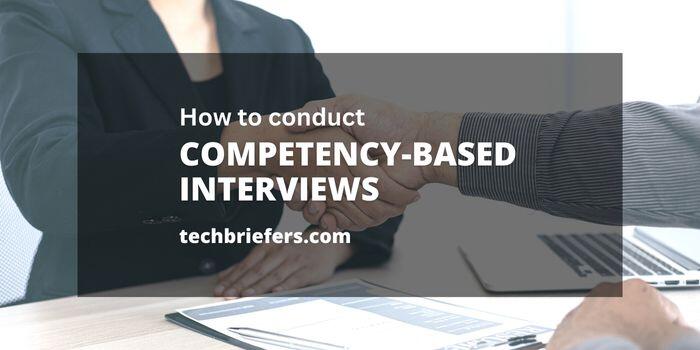How to Conduct Competency-Based Job Interviews

What is a competency-based job interview method? This type of interview is known as the method aimed at those who have just graduated. In other words, those who don’t have a lot of work experience are certainly best suited for this type of interviews. But what is it like and how does the competency-based job interviews work? Here’s the explanation:
Get to know competency-based job interviews
In accordance with its name, namely competence, the form of the interview conducted will also be related to your competence. In other words, this interview can show whether you are competent enough for the intended job or vice versa.
Referring to this, of course, this interview will also be conducted differently from other types of interviews in general. If the general type of interview will ask how your work experience in the company before. For this type of interview, your ability will be tested, whether it matches the vacancy you want or not.
Also Read: Tips to answer “why do you want to work here?” in interview
This type of interview is generally conducted for fresh graduates or those who have no work experience. In addition, it can also be applied to those who have worked in different industrial fields. In this way, HRD can assess the extent of your capabilities and also see your compatibility with the culture of the intended company.
Competency criteria in competency-based job interviews
Before taking a competency-based job interview test, it’s a good idea to know the two types of competency criteria that are generally used in the interview process. The following is an explanation of the two criteria:
1. Technical competence
Technical competence is a criterion used to test the ability of job applicants. This is generally related to the position chosen. For example, those applying for graphic designer positions, of course, will be asked questions regarding this matter. As well as the form of questions related to the use of Photoshop and also various other graphic design applications.
2. Behavioural competence
Unlike the interview above, this one competency criterion is generally used to test the soft skills of prospective applicants. This is generally related to social relations that will be established later. As well as the relationship between fellow employees and others.
Also Read: Top 5 soft skills to show during an interview
The stages of a competency-based job interview
For the competency-based job interview method, generally, this will be done by following the following steps:
1. Situation or task
In the beginning, the interviewer will generally provide questions that refer to a particular situation. After that, later the applicants will be given assignments and these assignments must of course be completed. In fact, it is not uncommon for interviewers to ask questions that are more specific.
Referring to this, of course, the candidates or applicants must also find the right formula, so that the answers given can solve the problems given properly. Meanwhile, the assignment itself is generally given per individual, but some are also intended for work per group.
2. Action
For this one stage, applicants will be asked to demonstrate the attributes attached to them. This is very important to do because it can show what the personality of the applicant is like. In some cases, the applicant will also be asked to speak in more detail and specifically regarding the information needed by the interviewer.
Also Read: The Power or Advantages of Digital Marketing
3. Know your communication skills
From the several stages of the steps above, the interviewer can know with certainty what kind of reaction the applicants show in selling themselves. In this case, it shows the advantages it has in answering various kinds of questions. In addition, through this, interviewers can also see the best abilities of prospective applicants, especially in communication. Because in general, communication also requires a special strategy, especially to achieve goals and the best results.
4. Evaluation
The final stage is evaluation. In this one year, generally, applicants must be able to explain what is meant by ‘why they do this’. So that in the end the results can be known. By carrying out this evaluation, of course, the interviewer can find out for sure whether the applicant meets the requirements and is in accordance with what is needed by the company. Because with evaluation, an overview of the abilities of prospective applicants can be seen more clearly.
Also Read: How to Create LinkedIn Ads: The Complete Guide
Advantages of competency-based job interviews
By using the competency-based job interview method, of course, there are various kinds of benefits that can be felt, such as:
Gain accuracy with competency-based job interviews
With competency-based job interviews, of course, accurate evidence can also be obtained easily. In other words, you as the owner of the company can see how the achievements of each candidate or job applicant. Not only that, but you can also see how the personality he has.
Minimize the turnover rate
Another advantage is minimizing errors that often occur in the interview process conducted using conventional methods. This is done more effectively and you can even measure it clearly and precisely so that the desired human resources can be obtained more easily.
Standards for job applicants
With competency-based interviews, of course, will provide a better picture of the abilities and qualities of prospective job applicants. This is clearly related to its suitability for the content or answers to the vacancies it wants.
Through the explanation above, you can see that this competency-based job interview method would be very appropriate to do if you are looking for fresh graduates with extraordinary abilities
